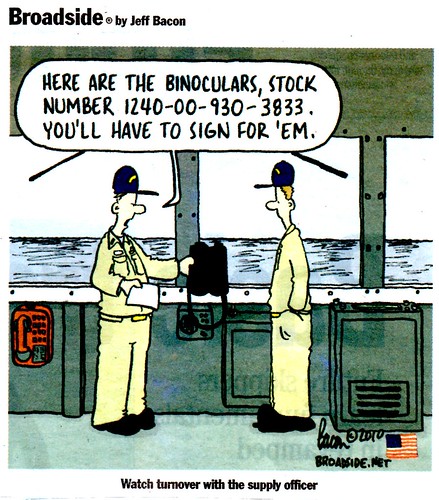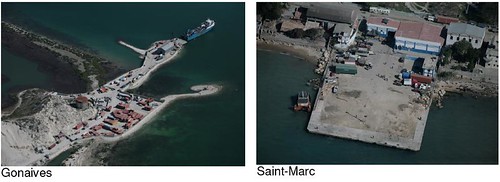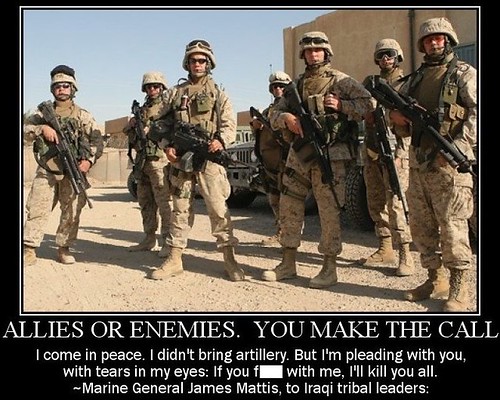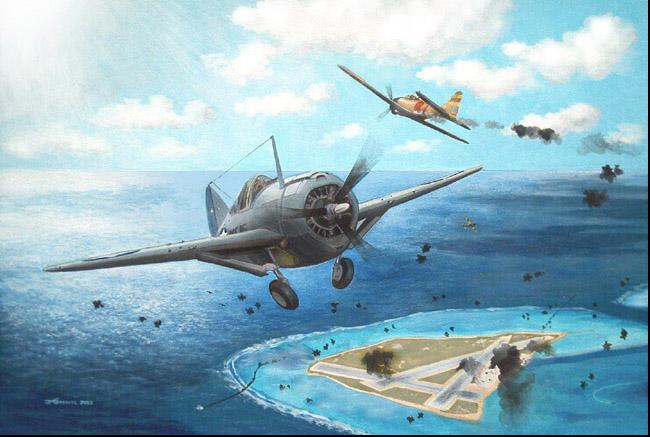
More Broadside here.
Proactively “From the Sea”; an agent of change leveraging the littoral best practices for a paradigm breaking six-sigma best business case to synergize a consistent design in the global commons, rightsizing the core values supporting our mission statement via the 5-vector model through cultural diversity.
 Mark your Sunday calendars, it is time for Midrats with special guest Mackenzie Eaglen, Research Fellow for National Security at The Heritage Foundation.
Mark your Sunday calendars, it is time for Midrats with special guest Mackenzie Eaglen, Research Fellow for National Security at The Heritage Foundation.



--Forwarded Message Attachment--Very interesting habits we are teaching the future officers in the military of a Representitive Republic.
From: [REDACTED]@usna.edu
Subject: Please Read
To: co[REDACTED]@usna.edu
Date: Wed, 27 Jan 2010 [REDACTED]
[REDACTED],
-----BODY OF EMAIL REDACTED ON A TEMP BASIS BY REQ----
Very Respectfully,
[REDACTED]
MIDN USN
--Forwarded Message Attachment--
From: [REDACTED]@usna.edu
Subject: IMPORTANT
To: co[REDACTED]@usna.edu
Date: Wed, 27 Jan 2010 [REDACTED]
[REDACTED],
Do not join the facebook group "Zero Tolerance=Zero Exceptions" or any other similar group.
This is coming down from the highest echelon. There will be severe consequences for disobedience.
Thanks,
[REDACTED]
... the Academy may be right on this. While no particular officers are named, there's some pretty harsh criticism of the university administration which could be construed as an open condemnation of a senior officer, which is a violation of the UCMJ.This isn't black and white, and is a very gray area. Like I have advised in a few emails - stick to informal and if needed formal grevience proceedures. Keep your nose clean and your eye on the goal - graduate. If you have some venom that gets you near a gray area, feed it to civilian friends & family, or vent to some dorky blogger.
I'd advise the MIDs to tread carefully here.
Subj: Naval Academy News Media Policy
The following information is provided to clarify the Naval Academy’s policy regarding interaction with news media.
Like the Navy and Marine Corps, the Naval Academy does not forbid anyone from speaking with news media. The Naval Academy’s public affairs office requests to be notified when midshipmen, faculty or staff are contacted by news media in order to provide assistance and advice. This assistance and advice is particularly important for individuals who do not routinely interact with media, do not wish to respond to media, or may lack perspective on issues of potential media interest.
In most situations, individuals are free to address news media - either initiating or returning contact with reporters - and can do so without approval from their chain of command. However, there are specific situations, such as an ongoing official investigation or judicial proceeding and issues involving classified information, where Navy and Marine Corps policy specifically addresses limits of public comment. It is imperative during such situations to obtain the assistance of the public affairs office when contacted by reporters.What is Facebook? Social media? New Media? Personal journal? Personal correspondence? Yes to all the above. That is why this is a gray area. If you canx facebook, can you do the same for subscriptions and online registration for NYT, WaPo, and multiple forums and, ahem, blogs out there? Do you restrict who they can and cannot email to? What about being a member of the NRA, NOW, or the Sierra Club? What about USNI? Do we punish them for being members of organizations that have authors who question policy? Sure we draw lines, at hate groups for instance, but be careful that your line is thick, bright, and straight. Crooked and selectively sketchy only breeds cynicism.
Naval Academy personnel who interact with media should also realize that their public comments can sometimes be construed - either intentionally or unintentionally - to represent the Navy or Naval Academy. It is important when interacting with media in an unofficial capacity to ensure that all opinions expressed are understood to be personal and do not necessarily represent the views of the Navy or the Academy.
Midshipmen, faculty or staff are free to interact with news media, but are strongly encouraged to contact the public affairs office prior to doing so. Additionally, Naval Academy personnel who do not wish to engage with media can refer all media requests to the public affairs office. As always, any questions concerning this policy or any news media related issues should be referred to the public affairs office at X2292 or pao@usna.edu.
So what happened to treating people not "by the colour of their skin but by the content of their character"? Ironically, Martin Luther King Day will be marked across the country tomorrow but this dream of King's is not being fulfilled.It isn't just politicians. It is everywhere. Even in the Navy - even with the Chaplains.
American politicians have got themselves into a real bind. They have to fret constantly about race but cannot talk honestly about it.
The deputy chief of chaplains is being denied a second star and assignment as chief of chaplains and will instead retire after the Navy’s inspector general found that he “reprised against” his former executive assistant during a captain’s selection board.As we all know - to survive an accusation like that can only result because the claim was bogus and unsubstantiated to the point the complaint was deemed baseless. Otherwise - the second part of the story would never take place.
...
In March 2007, that officer — who is black, but a gender was not provided — made an equal opportunity and hostile work environment complaint against Baker.
Rear Adm. Frank Thorp, chief of information, would not describe the complaint in any detail, and said he did not know the two chaplains’ religion.
Thorp said the unnamed officer, Baker and several others in the office met because of the complaint, after which Baker signed a memo stating he’d be fair during any selection board hearings regarding the accusing officer.
Because of his comment at the selection board 11 months later, “The Naval Inspector General concluded that during board deliberations, Rear Admiral Baker had violated the Military Whistleblower Act,” Thorp said.OK .... and what does his race have anything to do with the comments in question? Well, from all reports I have heard, nothing. Perhaps he did something wrong, but race had nothing to do with it - except to those who use race in everything.
CDR B was not one of the eight O 5 chaplains selected for promotion.
Thorp said the officer was later informed by someone present at the selection board that Baker had made a comment regarding leadership ability.
A summary of the Navy IG report states, “One unrestricted line board member stated that she recalled being ‘taken aback’ by a comment that RDML Baker made “concerning leadership in connection with the record of an African American officer” who worked for him.
According to the CNO’s memo, CDR B was subsequently selected for promotion to captain by the fiscal 2010 selection board.Mission accomplished. As always, if I am wrong - email me the details.
After President Obama announced his revised Afghan strategy in December, including the deployment of 30,000 more U.S. troops, NATO Secretary General Anders Fogh Rasmussen said allies had pledged about 7,000 "fresh forces." He also raised expectations that further commitments would be announced soon.Wait for it.
NATO has not provided a precise breakdown of where its promised 7,000 new troops will come from. But it appears that only about 4,000 of those forces were not previously announced or deployed.I won't even go into a description of the caveat problem this time either.
For instance, U.S. State Department officials have acknowledged that NATO is counting 1,500 troops sent to Afghanistan last year to provide security for the August presidential election; they will remain in the country, instead of returning home as originally planned.
Similarly, U.S. and NATO officials have touted the forthcoming deployment of 900 soldiers from Georgia, which is not a member of NATO, even though the government in Tbilisi had committed to the mission well before Obama announced his revised Afghan strategy.
NATO is also excluding the planned withdrawal of some forces from Afghanistan this year, including the entire Dutch contingent of about 2,000 soldiers, scheduled to leave in December.




PORT-AU-PRINCE, Haiti (Jan. 25, 2010) Service members working with U.S. Marine Corps 8th Engineer Support Battalion use a bulldozer to remove submerged container boxes. Military engineers are conducting salvage and repair operations in the main seaport in Port-au-Prince, Haiti during Operation Unified Response. (U.S. Navy photo by Mass Communication Specialist 2nd Class Chris Lussier/Released)

A fresh set of problems with the long-troubled LPD 17 San Antonio-class amphibious ships has sidelined two of the vessels, led the U.S. Navy and its largest shipbuilder into a passionate game of finger-pointing, and raised questions about Northrop Grumman's ability to deliver quality work and the Navy's ability to carry out proper shipyard oversight.Oh goodness.
The larger issues are coming from two core problems discovered aboard the LPD 17s, five of which are in service with four still to come.
Of more immediate importance is a problem that, left untreated, could wreck the four large diesel engines that drive the ships. The problem is not new but, having once thought a solution was at hand, the Navy and Northrop are once again trying to figure out why a fix hasn't been found.
Another issue, affecting all the ships in the class and other ships built at Northrop's Gulf Coast shipyards, could - unless it's fixed - shorten the service lives of all the ships. But how and why that problem arose could drive closer to the competence of Northrop and the Navy's inspectors to properly inspect weld work.
Engineers are trying to figure out how debris - "contaminants" in engineer-speak - is getting into lube oil in the large diesel engines that drive the ships. The contaminants cause excessive wear on bearings that support a crankshaft at the bottom of each engine. If the problem isn't treated, the crankshaft will be thrown out of line and the engine could suffer serious damage or even be wrecked.
The problem isn't new, the Navy said, and showed up about a year ago in the third and fourth ships of the class.
"We thought we had it licked," Jay Stefany, the Navy's program manager for the LPD 17 program, told reporters Jan. 21. "And that's where we were until right before Christmas."
That's when the newest ship in the class, the USS New York (LPD 21), reported a bent crankshaft in one of the four diesel engines that drive the ship. Engineers found that the shaft was thrown out of alignment by scratches being made in the inner ring of the nine bearings that support the shaft - scratches that caused enough of a difference in the thickness of the bearings to make the shaft wobble.The good new here is that CFFC is taking this seriously.
The scratches are caused by particles too small to see - much of them between 20 and 40 microns wide, or about .00118 of an inch, according to Stefany.
Early in December, Adm. John Harvey, commander of Fleet Forces Command, ordered Rear Adm. Michelle Howard, commander of Expeditionary Strike Group Two, to begin a Manual of the Judge Advocate General investigation, or JAGMAN, of the problem. The effort reportedly is being led by NAVSEA's Rear Adm. Tom Eccles, the Navy's chief engineer. The investigation is focused primarily on the San Antonio and not the New York, which has yet to transfer to fleet operational control.Make sure and listen to Midrats on Sunday for a BIW funny - but this just adds to the joy of the folks from BIW.
"We found a higher-than-expected failure rate on quality of the thickness of the welds," Stefany said. The issue was not that, properly hangared, the welds would soon fail in service. Rather, Stefany said, the welds are "critical for shock survivability and for service life. You need [the thicker weld] dimensions to guarantee that." As a result, he said, a ship designed for a service life of 40 years might only make it to 30.Note to our friends in Millington. I will help you find the BA/NMP for LCDR/CDR/CAPT types for you to recode and increase your number of inspectors. I will even help you find additional funding for graduate school engineering education - just give me the top cover and the mandate.
"It's not as catastrophic [as the lube oil problem] but we're working it," Stefany said. "It's not as in-your-face as the engines are - basically it's just putting more welding material on."
.... Chris Cavas, got Jay wrong on the "bent crankshaft". It is out of round, not "bent".Not the same, but important. Have an engineer tell you the difference - your eyes may glaze over - but he will be giddy as schoolgirl telling you about it. You'll make him happy. Kind of like asking Byron about welds ....
DDGs have a similar challenge, and it happened because the entire QA cadre dropped the ball. Uncertified and barely certified personnel performed weld inspections on P1 and P2 piping. A good QA will catch the problems and fix them as you build the ship. It didn't happen that way in this case.
Bad welds accumulated over time until the ships were nearly completed, then everyone went "Oops!" The challenge is that the problem was of unknown magnitude because it involved piping that was lagged and obstructed from view in many cases. LPD-17 class had significantly more welds, so more problem welds which meant they got most of the attention.
A Technical Review Team inspection plan was set in motion last year and the push to find a work around has been going on for a few months. Weld repairs are being made. ASTM weld criteria is being accepted where it makes sense and MIL SPEC criteria will be required where needed (it involves a short equation using the lengths of the two weld legs). There is a detailed Risk Analysis out for review at the moment.

Chief of Naval Operations Adm. Gary Roughead has approved the main design of the service dress khaki uniform, a World War II-style uniform that began development in 2006.
The uniform — which will be optional and can be worn in place of the summer white uniform or the service khakis — sports a contemporary design that includes an unbelted waist and peaked lapels. The shirt will have a black tie and come in short- and long-sleeve versions.
The president announced his proposal at Graham Road Elementary School, a low-income, high-achieving school where 80 percent of the students qualify for free or reduced-price meals. Five years ago, the school adopted a turnaround strategy of student assessments, teacher evaluations, and other steps to improve test scores. The result was that in 2008, all sixth-graders met Virginia’s reading standards and 96 percent met the state’s math requirements, according to the White House.
“We’re going to raise the bar for all our students,’’ Obama said at the school. “And we’ll reward success and replicate it across the country.’’

| The Daily Show With Jon Stewart | Mon - Thurs 11p / 10c | |||
| Obama Speaks to a Sixth-Grade Classroom | ||||
| www.thedailyshow.com | ||||
| ||||
 In case you missed it, you owe it to yourself to listen to Episode 4 of Midrats.
In case you missed it, you owe it to yourself to listen to Episode 4 of Midrats.Surely things would be different if a major disaster struck in the United States. Right?I would also add that if you live in a major metropolitian area - having a country retreat would be good as well - if you can't afford that, ask your Mormon neighbors for some good references on what keeps for long periods of tiem.
Not necessarily. Of course, every disaster is different—the problems caused by earthquakes differ from those caused by floods, hurricanes or volcanoes. But while the greater wealth and infrastructure in America is a nice thing, it doesn't mean that disaster relief will necessarily arrive quickly. American cities have better airports and more roads, but those can be damaged too. This was certainly the case with New Orleans and large stretches of the Gulf Coast after Hurricane Katrina, where roads and railroads were flooded, blocked by fallen trees or rendered impassable by collapsed bridges. Military forces are equipped to cross rivers, repair bridges, and move massive quantities of supplies under difficult conditions, but it takes time to get military engineers together and on the way. Plus, the more people you send in to help, the more of the supplies you're delivering that have to go to support them, as opposed to the people they're supposed to be helping.
After Hurricane Katrina, flood waters, debris and downed bridges were the main logistical impediments. An earthquake could cause even worse infrastructure damage that would hamper relief. If, say, the New Madrid fault in Missouri were to let go with a series of magnitude 8.0 earthquakes, we could see much of the Midwest devastated, with enormous damage to railroads, highways and bridges. (The last such quake, actually a series of three earthquakes, caused damage as far away as Washington, D.C,. and Charleston, S.C., and caused the Mississippi River to actually flow backwards as the newly formed Reelfoot Lake filled. But there weren't many buildings and bridges in the midwest in 1811.) Responding to such damage would strain the resources of the nation, and many communities might go weeks before seeing significant relief. A major California earthquake, an Atlantic Coast tsunami or another major hurricane might also create this kind of widespread devastation.
Which brings us back to a theme Popular Mechanics has been driving home for years: self-reliance. If you're at the scene of a major disaster, it may be a long time before outside help arrives. But one person is sure to be there: you. And nobody cares more about helping you and your family in time of disaster than, well, you. So it makes sense for you to be prepared to take care of yourself—and look out for your neighbors—for some time afterward. That means having adequate stocks of food, water and basic tools on hand. (Experts say that Haitians should have had at least two weeks of food on hand, but of course many Haitians can't afford to keep such reserves. Americans, generally speaking, can.)

Visit msnbc.com for breaking news, world news, and news about the economy
The last of Camp Lejeune’s Marines in Iraq are on their way home, base officials said.
The command element of II Marine Expeditionary Force (Forward) are expected to return to Camp Lejeune Monday, according to a press release from II MEF.
The return of II MEF is the first major wave of American forces to leave Iraq as the U.S. begins to withdraw, a process that is scheduled to be complete by the end of next year, according to the release.
Their return also ends the Marine Corps’ seven-year participation in Operation Iraqi Freedom.
After Monday, the only Marine forces in Iraq will be a small logistics element that will complete the turnover to Iraqi security forces and a brigade from the U.S. Army.




6. The F2A-3 is sadly out-classed in all respects by Japanese 00 fighters. Although all pilots of this squadron were aware of this fact, they drove their attack home with daring and skillRight on target. Brave men will go into battle regardless of what they have to work with. The guilt does not lie with the warrior or the manufacturer (the Buffalo was OK when it was built, but to old design wise to be of use in '42 - though the Finns made good use of it against the Russians. What strikes me in some of these first hand comments, is that there were made inside 48 hours from the battle these men we in. Notice the tone and professionalism - and with little exception - no invective. Four Divisions of F2A-3 from VMF-221 took off that AM. 20 pilots overall. By the end of the day; - 12 KIA or MIA. - 3 WIA. - 5 survived (one due to the fact his aircraft had mechanical problems. That works out to a casualty rate of 75%. By the end of 06 JUN, when these reports were written, only 3 F2A-3 were still airworthy.
The Zero fighter in level flight is faster than the F2A-3. It is much more maneuverable than the F2A-3. It can outclimg the F2A-3. It has more firepower than the F2A-3.The photo above is of one of the survivors, then 2LT Brooks, USMCR. Here is his story.
...
The F2A-3 is not a combat aeroplane. It is inferior to the airplanes we were fighting in every respect. The F2A-3 has about the same speed as a Aichi 99 Dive Bomber. The Japanese Zero fighter can fly circles around the F2A-3. ...
It is my belief that any commander that orders pilots out in combat in the F2A-3 should consider that pilot lost before leaving the ground.
...
As for the F2A-3, it should be in Miami as a training plane, rather than be used as a first line fighter.
Hat tip reader Sal.USMC 2dLT William "Bill" Brooks in F2A-3 Bureau No. 01523 (MF-16) was one of the few survivors of the June 4, 1942 morning interception of the incoming Japanese attack on Midway Atoll by VMF 221. "At about 0600, the alarm sounded and we took off. My division climbed rapidly, and I was having a hard time keeping up. I discovered afterwards that although my wheels indicator and hydraulic pressure indicator both registered "wheels up", they were in reality about 1/3 of the way down." Following LT. Sandoval down the right side of the incoming Japanese formation, Brooks looked back to see a Japanese aircraft falling from his or Sandoval's fire. Losing contact with his division, he started to climb for a second attack when the Zeros attacked. Diving (slowly with partially extended landing gear) for the water, he circled the island while anti-aircraft fire drove off his pursuers. " My tabs, instruments, and cockpit were shot up to quite an extent, at this time, and I was intending to come in for a landing. I saw two planes dogfighting over in the East, and decided to go help my friend if at all possible. My plane was working very poorly, and my climb was slow. As I neared the fight, both planes turned on me. It was then that I realized I had been tricked into a sham battle put on by two Japs, and I failed to recognize this because of the sun in my eyes. I turned and made a fast retreat for the island, collecting a goodly number of bullets on the way. After one of these planes had been shaken, I managed to get a good burst into another as we passed head-on when I turned into him."
This is the moment captured by the painting"I don't believe he could have gotten back to his carrier, because he immediately turned north and down. I again decided to land, but as I circled the island I saw two Japs on a Brewster. Three of my guns were jammed but I cut across the island, firing as I went with my one gun. I could not get there in time to help the American flyer, and as soon as the Brewster had gone into the water I came in for a landing at approximately 0715. My plane was damaged somewhat, having 72 bullet and cannon holes in it, and I had a very slight flesh wound on my left leg. It is my express desire that LT. Sandoval, deceased, be logged up with the bomber which one of us got in our first run." - From the after-action battle report of Bill Brooks - June 4, 1942 -
I guess in the San Antonio area that is predominately Hispanic, that is one of our major components that we recruit for. But, me as being and African-American Naval Officer, I am able recruit for African-American as well.One team; one fight, eh? So, you are NOT able to recruit non-Hispanic Caucasians? Asians? Mixed-race? In your scan?
As of the census of 2000, there were 1,711,703 people, 601,265 households, and 432,131 families residing within the MSA. The racial makeup of the MSA was 71.40% White, 6.24% African American, 0.77% Native American, 1.40% Asian, 0.10% Pacific Islander, 16.64% from other races, and 3.44% from two or more races. Hispanic or Latino of any race were 50.43% of the population.Yep, he has no interest 43.33% of San Antonio ... actually the numbers are fuzzier than that. Let's see - to get 50.43% Hispanic - at least 2/3 of the Whites are "Hispanic-White." Probably half the Blacks are "Hispanic-Black" and probably half the "Other" are "Hispanic-Other."
"I have never been prouder of our recruiters, especially this one - as ordered, he actively denied opportunities to those who look like over 72% of the American taxpayers who pay our salary! "Yep, it is that ugly.